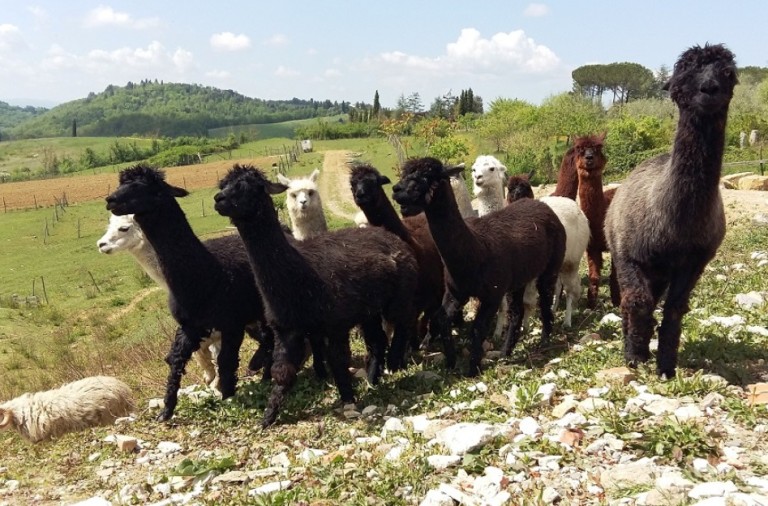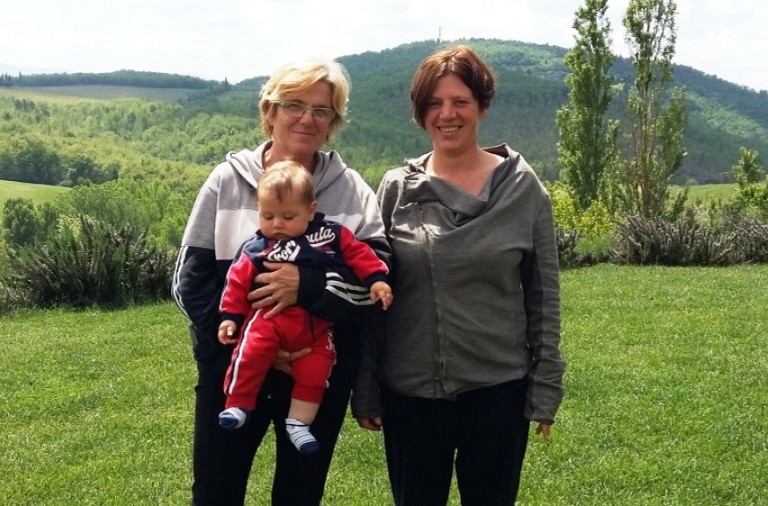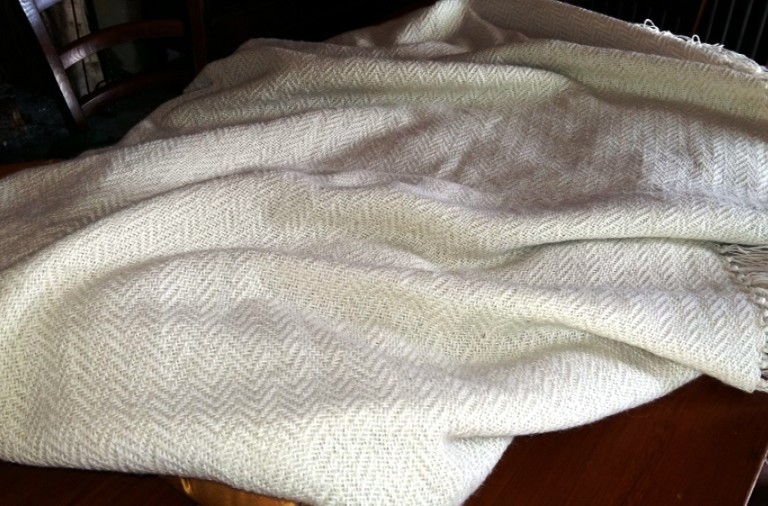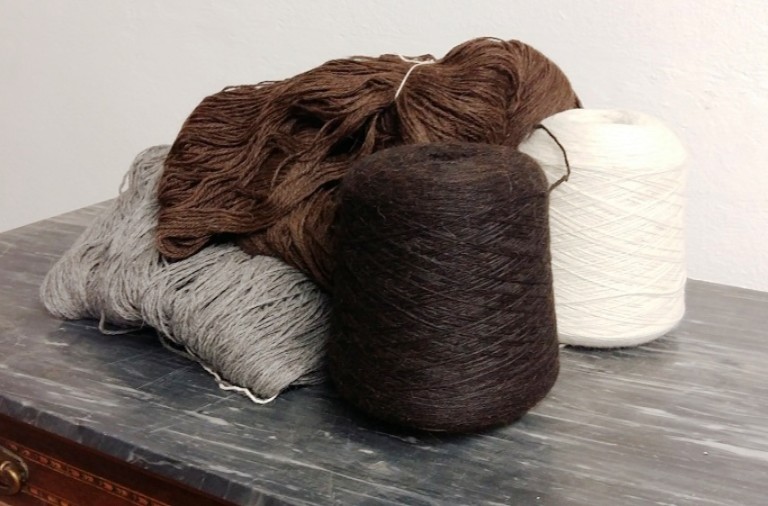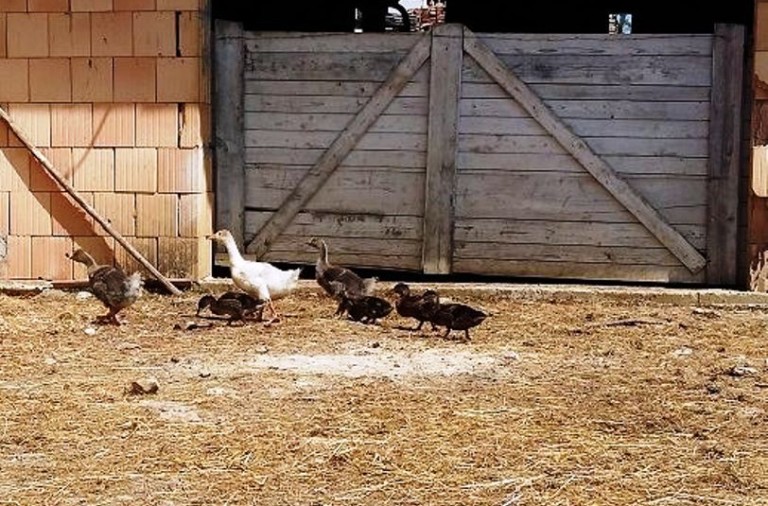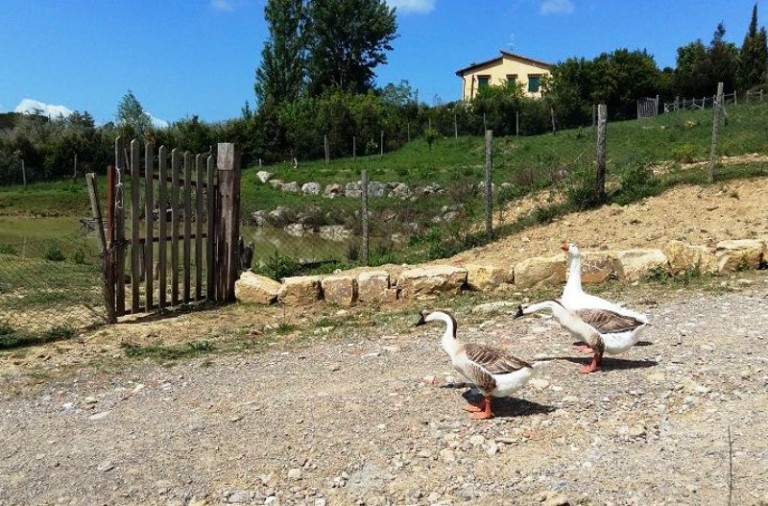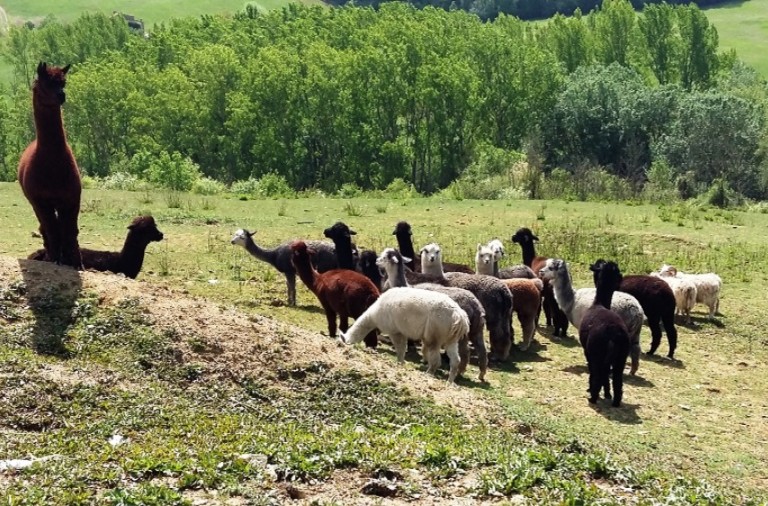Articolo disponibile anche in: Italian
Immersed in the valley between Barberino Val d’Elsa and Tignano, there is a space dedicated to tranquility and the love of nature.
Chianti, used to cattle and sheep raising has discovered something unique: the raising of alpaca. 9 hectares of land are host to this animal, which although arriving from afar, finds a perfect habitat here.
The alpaca is appreciated for its fine wool and lives among other local species; cattle, geese, sheep, horses, hens, cats and dogs. They make up a veritable farm in an oasis of timeless peace and are shadowed by the Australian herder, Antonella Gistri and her daughter Carolina Ortu who show us their alpaca valley; from the animals to the items made with their wool.
“We began by chance”, says Antonella. “The alpaca adventure became a passion. We became curious by reading an article about a woman who had brought them to Italy. We went to see them in Grosseto and fell in love”.
“In September of 2001” she tells us, “we bought a male and 5 pregnant females who gave birth to as many baby alpacas. One of these is Gaetano, born on April 21. We now have 25 of the specimen”.
“We principally work the wool”, she continue “It is anti-allergic, warm and light and has many qualities. It has many tones. We decided not to die the wool and leave it in the four basic colors: black, brown, gray and white”.
“We sheer then between the end of may and the beginning of June,” explains the proprietress of the farm. “From their back and sides we get a first quality yarn, and the wool from their neck and legs is used as stuffing. We then go to the spinning wheel”.
“Once the thread is ready”, she underlines, “we can transform it into products We create scarves, hats, blankets and made-to-order sweaters. We sell the items in the seasonal markets, from September to January. We also organize school trips”.
“The animals need little attention. They are docile, gregarious and creatures of habit. They can not defend themselves and are instinctively afraid. To keep everything under control, at night they sleep in a raised area to protect them from wild dogs and wolves”.
“They are originally from the Andes,” she adds, “ and adapt easily to our climate. They belong to the camel family, but unlike their cousin, the llama, they only spit when they feel threatened. And they chew on grass instead of ripping it out like sheep”.
“I believe they are also very intelligent”, concludes Antonella.“Generally, the females give birth alone. But in the event of a problem they come to ‘call’ us at home. We helped the little one, born feet first, to do gymnastics, and now he runs faster than the others!”.
Noemi Bartalesi
